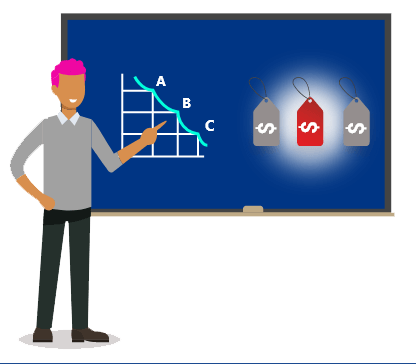Selling anything is not easy. Even the most experienced sales representatives are susceptible to falling into sneaky traps and making common errors. It is of the utmost importance to address them and put into practice a sales plan that will successfully prevent those B2B sales blunders, which may lose you money and a reputation you worked hard to build.
Mistake 1: Selling without creating relationships

Establishing and maintaining productive connections is the key to success in business-to-business sales. Most salespeople put too much emphasis on making a quick buck at the expense of cultivating long-term relationships with satisfied and loyal clients.
Aggressive marketing tactics are the result of not doing homework. Consider B2B sales a long process of warming up leads rather than a rapid one. The use of a sales cadence is one method for this. You'll probably hear "yes" if you work on building connections and making many points of contact.
Ways to build trust and potential opportunities:
Mistake 2: Reaching the incorrect group of individuals
Reaching the right individuals is one of the essential factors in a business-to-business sales plan. Most salespeople go after enterprises when they should have concentrated on SMBs, or go for lower-hanging fruits when they should have targeted decision-makers. Reps are also to blame for engaging in high-pressure sales tactics with customers who are not interested in their service.

Research and understanding of the industry are essential when it comes to finding the ideal group of individuals to work with your specific product. It is crucial to discover key decision-makers accurate contact information during the project's early research phase. However, it is vital to check that your information is correct. It is essential to double-check people's email addresses before sending them a message since the information that may be found on the internet is not always accurate or current. After you have collected the necessary individuals' contact information, it is time to tailor the discussion to your specific needs.
Mistake 3: Your customers should not be rushed

Because it takes time to establish trust and connections with prospective customers, B2B sales need much more work than other deals. Many sales representatives have the terrible habit of pressuring potential customers to make a purchase immediately, which often causes the customer to back away from the proposed transaction.
You have to give consumers enough time to invest in your product or service before you can expect anything from them. When it comes to this, the strategy that works best is courteous perseverance. Follow-up emails should be of high quality, but they should not be sent more often than once every three days. Instead, you should make an effort to determine why the prospect hesitates to commit if they are looking at your rivals,
what advantages you have over them and how you can best capitalize on those advantages. Once you have the answers, you can use each subsequent email to provide more value to persuade them. This might be fresh research on the market, a demonstration that walks through the product's actual use, or even a free solution.
You will leave a powerful impact on each prospect if you try to cultivate a relationship with them. You will remain at the forefront of their minds when they are ready to purchase in the future, even if they are not interested in buying your goods right now.
Mistake 4: Putting solely the benefits of your product in the spotlight
It does not matter how smoothly the new lines of code operate or how exquisite the user interface paint appears; if it is not evident in the outcomes, the consumers do not consider it to be necessary. In today's business world, a company's primary concern is not with the characteristics of its goods but rather with how those ducts might help it addr ss and overcome its most pressing difficulties and issues.
Because of this, we must consider things from their point of view. Take the time to go the additional mile and understand your prospect's primary difficulties, their rivals, and the industry.
The most effective strategy is to include testimonials from actual customers and numerical evidence to back up your promises. Creating content by users is one of the most effective strategies for gaining authority and trust. You will get a more significant number of responses to your emails if you can write them in a way that avoids the feature-benefit loop, does not overuse power phrases, and demonstrates actual distinctions. Your bounce rate will improve considerably because your sales approach will be well-positioned to succeed.
Mistake 5: Concerned about paying the higher price point
Price is the most crucial consideration in closing a business, even if the sales technique is excellent. The salespeople are aware of it but tend to play it too safely along the pricing line. This undermines the measurements they use to measure their progress.
Those who start businesses and make decisions often sell their wares at artificially low prices, believing that doing so would have a more significant effect. On the other hand, corporate clients quickly detect a lack of faith or cheapness in a vendor. This comes in helpful during negotiations, and you may end up charging an amount that is even lower than the one you quoted.

Always price your product representing the amount of hard work, effort, and manufacturing expense that went into it, and be confident in your ability to defend that price. It demonstrates that you appreciate your labor and have faith in the result. If you can persuade B2B clients that the outcomes justify the price, they will accept it.
Another catastrophic error that may hinder business-to-business sales is a lack of pricing alternatives for customers. Businesses are always looking for new options, and a pricing structure with three tiers provides them with more information to help them make an educated choice. If you are concerned that the price of your duct is too high, you may stablish a low barrier of entry with a basic plan while showing the true worth of your product with a premium plan.
Mistake 6: Using just one channel of communication exclusively

Given that we are now living in the era of information, you mustn't restrict your communication to just a single channel. Just like regular consumers, business people utilize various devices, platforms, and channels throughout the day to engage with one another, exchange information, and learn about new topics.
Because of this, you can no longer restrict your marketing strategy to a single distribution channel. To get the most significant outcomes, it is necessary to
coordinate the use of email, the telephone, social media, video conferencing, and in-person meetings.
You should begin by mapping the customer journey to provide prospective customers with an omnichannel experience covering all bases. Determine where and how customers like to connect with your product or salesperson and what they are saying about your product and capture all relevant data throughout the platform. Now that the plan has been developed gather the departments of sales, marketing, and customer service together to discover the appropriate technology stack to support and implement it. Always be open to receiving feedback, and use it to improve your Omni - channel strategy.
Mistake 7: Because you don't measure your sales processes
Salespeople must maintain organization and have a crystal clear picture of their objectives. It will be challenging to make improvements and adjustments without monitoring your sales processes. You can watch and analyze vital data using a customer relationship management (CRM) system, and you can analyze critical data. This will allow you to determine success, providing you with a deeper insight into the industry and consumers.

However, keeping track of and measuring your data may be a double-edged sword because many SaaS companies tend to suffer from data overload, which can be defined as the practice of measuring and monitoring an excessive number of variables. It is essential to identify the data that plays a critical part in your sales process and devise an efficient measuring method. Once more, this boils down to being aware of your essential things. Determine the attainable objectives, the cedure that will be follow d, the smaller milestones, and the dates. Compare your results to the measurements to see how well you are doing and what aspects of your performance may be improved.
No one set approach applies to business-to-business sales. Because of this, it is essential to collect data and to always strive toward improvement.
Conclusion

When selling your product or service to another company, it is simple to get into a routine that is both comfortable and familiar. However, indulging in self-satisfaction almost always results in disappointing sales. If you want to be successful in growing your company right now, you have to steer clear of committing these deadly blunders and have the flexibility to adapt to new business approaches.
By automating monotonous operations inside your RSoft CRM, you may avoid making these common B2B
sales blunders and yet meet all of your sales goals simultaneously.


